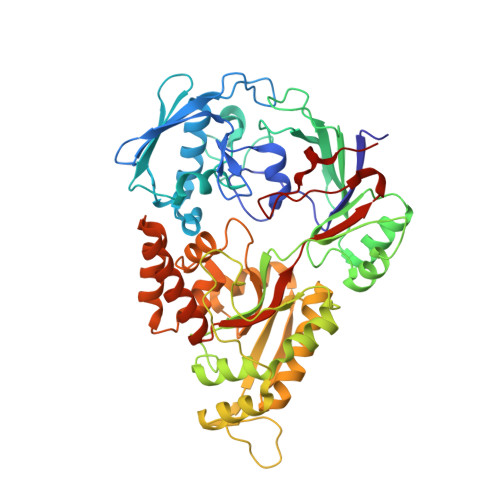Structural characterization of a putative endogenous metal chelator in the periplasmic nickel transporter NikA
Cherrier, M.V., Cavazza, C., Bochot, C., Lemaire, D., Fontecilla-Camps, J.C.(2008) Biochemistry 47: 9937-9943
- PubMed: 18759453
- DOI: https://doi.org/10.1021/bi801051y
- Primary Citation of Related Structures:
3DP8, 3E3K - PubMed Abstract:
Escherichia coli and related bacteria require nickel for the synthesis of hydrogenases, enzymes involved in hydrogen oxidation and proton reduction. Nickel transport to the cytoplasm depends on five proteins, NikA-E. We have previously reported the three-dimensional structure of the soluble periplasmic nickel transporter NikA in a complex with FeEDTA(H 2O) (-). We have now determined the structure of EDTA-free NikA and have found that it binds a small organic molecule that contributes three ligands to the coordination of a transition metal ion. Unexpectedly, His416, which was far from the metal-binding site in the FeEDTA(H 2O) (-)-NikA complex, becomes the fourth observed ligand to the metal. The best match to the omit map electron density is obtained for butane-1,2,4-tricarboxylate (BTC). Our attempts to obtain a BTC-Ni-NikA complex using apo protein and commercial reagents resulted in nickel-free BTC-NikA. Overall, our results suggest that nickel transport in vivo requires a specific metallophore that may be BTC.
Organizational Affiliation:
Laboratoire de Cristallographie et de Cristallogenese des Proteines, Institut de Biologie Structurale J.P. Ebel, CEA, CNRS, Universite J. Fourier, 41 rue J. Horowitz, 38027 Grenoble Cedex 1, France.



















